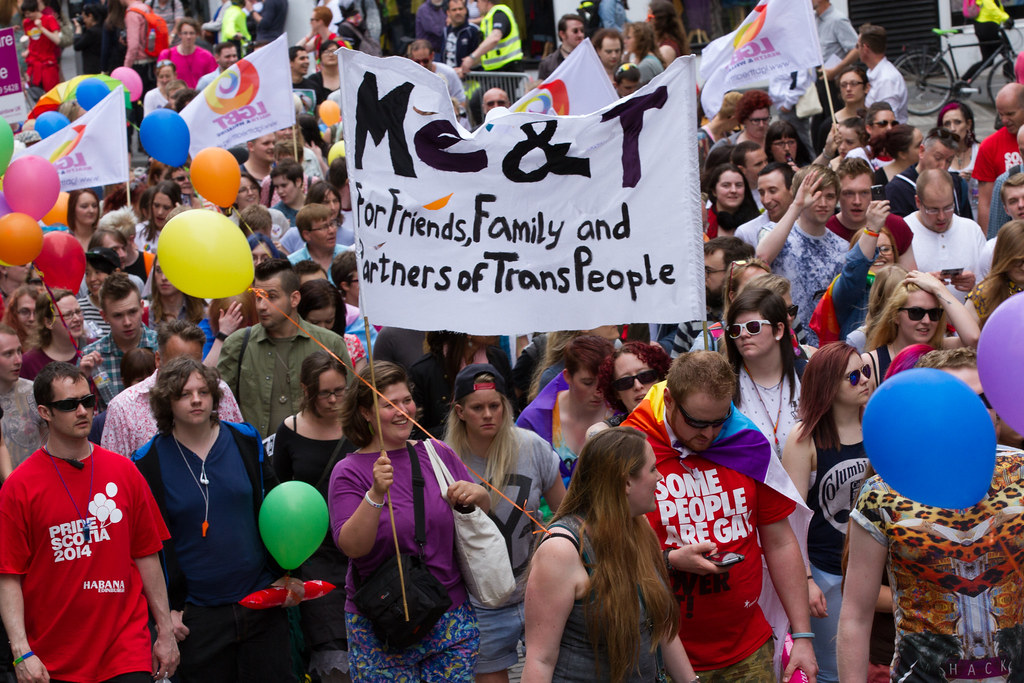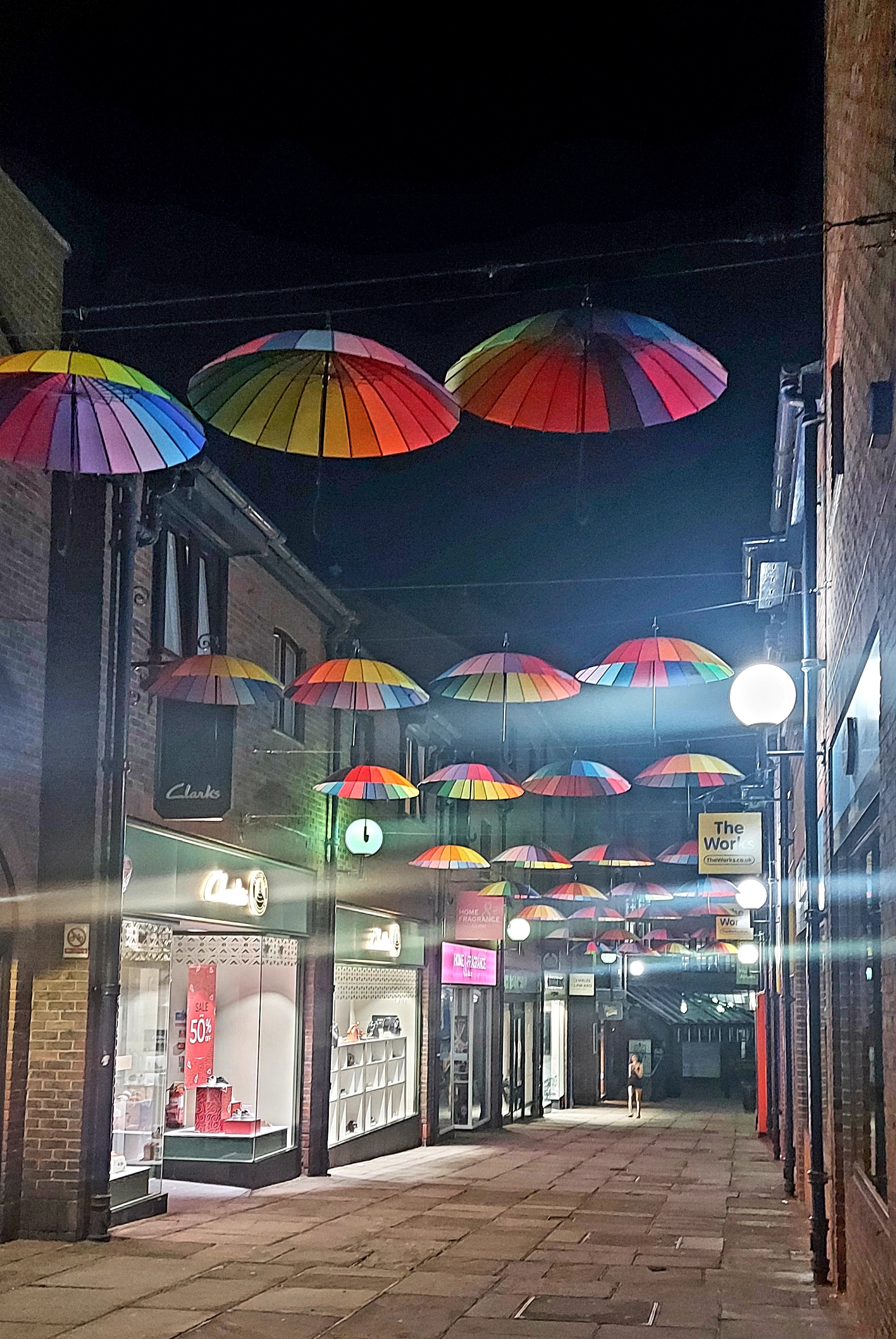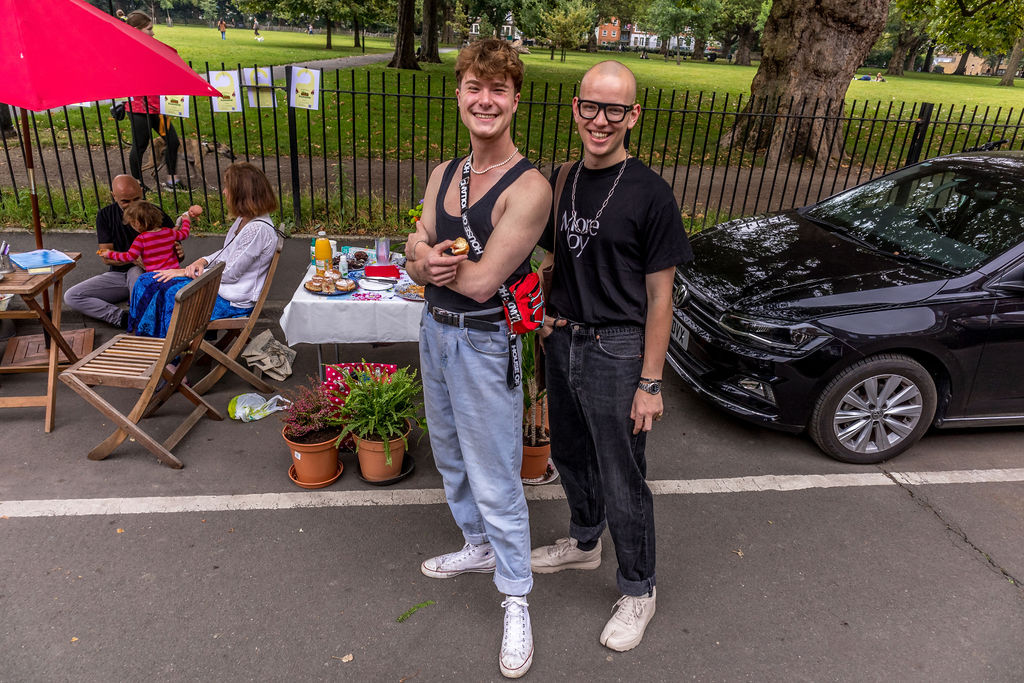Walking and Pride
Two years ago, Kate Joester, Project Coordinator for Living Streets Scotland wrote a blog about Pride month under lockdown.
This Pride month, Kate is returning to ideas about how safe and welcome LGBTQ+ people feel walking and wheeling – "together in a Pride march and going about our lives."
I’m writing this on our Living Streets away day in York, a city I haven’t been to for many years. The main streets are absolutely bedecked with Pride flag bunting, butting up against Union flag bunting left over from the Jubilee celebrations, and Pride flags are flying over fancy hotels and in the windows of chain coffee shops. It felt easy and safe to walk those streets as a queer person – I saw young same-sex couples holding hands and I think they felt safe too.


But this month, the athlete Kelly Holmes came out as gay – at the age of 52. And when she spoke about being gay in the army when coming out (or being outed) would have meant a court martial, I remembered how recent any of this is. I’m six years younger than Kelly Holmes: we both grew up when the male/male age of consent was 21, when Section 28 chilled discussions in our schools, where the outing of a single LGBT teacher was tabloid front-page news.
And even now, it’s very much not the same everywhere – in 2020, more than 1,000 people claimed asylum in the UK because they were LGBTQ. For them, this is a much safer country – but still one where one in five LGBT people report having experienced a hate crime in the last year, and 18% have been homeless at some time in their life.
So, this is the context in which we march in Pride month, but also the context in which we walk or wheel down our local high streets or to work or school. Our experiences have varied, and continue to vary, so much, and so how safe and welcome we feel in our streets and public spaces also varies. Amidst all the huge agendas about reducing car journeys, revolutionising our planning system, rejuvenating town centres and so on, walking and wheeling is at the heart of it about individual humans, our bodies moving through the places we live, work and play.
Our work at Living Streets is about making that human scale difference. When we talk about walking and wheeling, we try to put across the need for everyone to have the right to go from their home to their destination on good pavements and paths, in safe communities, and to find what they need nearby.
I work on 20-minute neighbourhoods, and over the last couple of years I have been interrogating what that means for all the people in those neighbourhoods. What does it mean when what you want might not be the same as most of your neighbours? What does that mean when there are no LGBTQ venues anywhere near you, when you’d like your children to meet other children of same-sex couples or trans parents but there aren’t any in your village, or when you simply want to be in the majority for a change? As LGBTQ people we have always used words like “community” and “family” creatively, but sometimes that creativity has geographical limits.
And of course, nobody belongs to only one community. I’m a white person, and a woman, and a lesbian, and a mum, and a dog owner, and a birdwatcher. All of those things also affect what I need in my community, what I can give to my community, and how I interact with it. LGBTQ people living in other communities, trans people, LGBTQ people of colour – we all bring our whole selves to the places we live and the streets we walk down.
During Pride month, Living Streets created a LGBTQ affinity group internally for staff to gather, reflect and support each other. It is by making space to share our stories we can begin to tackle the important work of unpicking oppressive systems, mindsets and attitudes within society as well improving the workplace setting too.
This weekend, I’ll spend my birthday marching with Pride Scotia through the streets of Edinburgh as I first did at the first Scottish Pride event in 1995. We will all see the Pride flags and my 17-year-old will think that’s a normal thing for June, and I will be astonished at how much has changed, and the 70- and 80-year-olds among us will remember a bigger change still.
Happy Pride, everyone, and I hope that, whether you march or not, you feel welcome and safe wherever you walk or wheel.


About the author
Kate Joester
Partnerships and Impact Coordinator, Living Streets
[email protected]